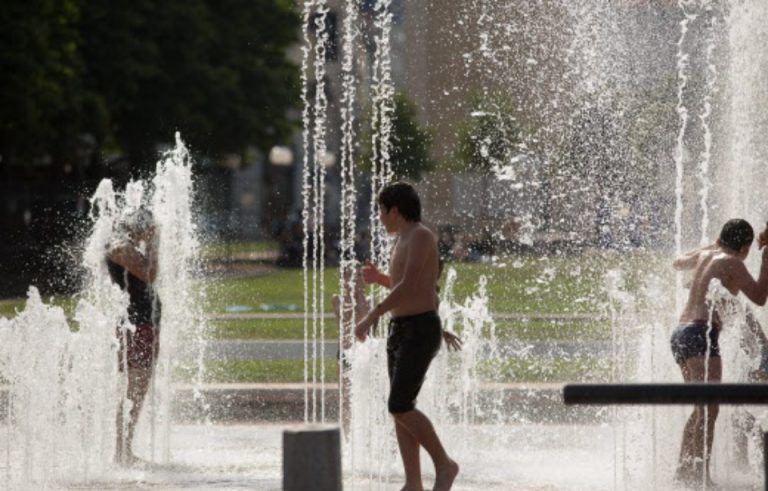While the level of the Seine and the Saône continue to worry, fifteen departments remain vigilant against rising water. Information and protection measures can be taken against this natural risk regarding 70% of municipalities.
Fifteen departments are on orange alert for floods as the map published by Meteo France, Friday 26th January at 4pm.
Among them Paris , where the Seine continues to flood with a peak expected in the course of the weekend between 5.80 m and 6 m . What would remain lower than 6.10 m measured in 2016.
Avalanches, earthquakes, storms, storms … France is not spared by natural hazards. But whatever the threat as is the risk of flooding.
What are the areas prone to flooding?
“Floods are the first natural risk in France, because flood countries with very important mesh of waterways and historically built around water,” recalls Stephanie Bidault, the CEPRI, resource center dedicated to this risk for which he should stop denying the vulnerability, to better address them.
In France, 17 million people may be affected by overflows, 1.4 million by coastal flooding. Including runoff phenomena, that makes 70% of municipalities with a risk of flooding.
rapid events in the South, torrential floods on reliefs, slow overflows, phreatic rise … The government has identified 122 priority territories, but all cities are concerned, throughout France, Bidault said Stephanie.
In terms of impact, the flood of spring 2016 Île-de-France, for example, has caused more than one billion euros of damage. According to the OECD, a flood like that of 1910 would generate 3-30000000000 euros in direct damage.
Soil quality does affect flooding?
“For a while there was a form of laxity, because much has been built in flood zones and did not keep the memory of places and weather events” , said Minister of ecological transition Nicolas Hulot.
However, today “expropriate all the people in the flood zone is not possible! “ Notes Stephanie Bidault.
According to her, the artificial soil has a “big impact” on runoff phenomena.
But not really on the current flood, said Vazgen Andreassian, hydrologist at the Institute for Research in Science and Technology for the Environment (Irstea): “soil sealing” plays little here because the soil soaked by the rains n ‘not absorb more water than concrete floors.
How to guard against floods?
“Since the Middle Ages, Colbert and the levees of the Loire … we thought we could protect and grow by building dams and structures. It was thought that the man was stronger than nature “ , noted the head of CEPRI.
That began to change in the 1980s, often over major events, with the implementation plans. A “mix” of measures: structures (dams, water retention ponds, weirs …), informing the public, crisis management (exercises …).
“We improved a lot in the alert,” according to Nicolas Hulot. But “we will never be ability to completely contain the impact. We can take action (…) but to promise that there will never flood, no. “
However, we could do better in terms of governance or funding. For example, in Île-de-France, the consideration of flood risk in urban planning policies is “limited” , estimated this week the OECD, which also points to the absence of a “financing strategy to height of relevant economic issues “ .
Better inform citizens, including water level may affect them, and for that refine knowledge: people would organize themselves better so, would use different materials, would enhance the electrical systems …
How to better protect Paris floods?
Anticipating as habitat and infrastructure not necessarily reconstruct identically, after a devastating flood. This is the meaning of the plan “resilience” of Paris, to prepare the city at risk, including, back a hundred-year flood.
To prevent a flood such as that affecting the Paris region now, concretely, “it would take a huge storage tank close to Paris” , said Vazgen Andreassian.
Four reservoir lakes regulate the basin of the Seine, but they were already nearly full Friday. They are “a hydraulic road week” in Paris (the water they release sets a week to achieve Paris) which makes their management “inflexible” , he added.
Another hypothesis, “flood of rural areas upstream of Paris” , to protect the capital economically justifiable, but hardly acceptable socially, recognizes the hydrologist.
For Marc Barra, an ecologist with the Agency for the biodiversity of Île-de-France, structural measures could limit the impact. “Intensive agriculture has the effect of weakening the soil (…), which capture less water and have some responsibility in accelerating flood” , he notes. Also advocating for the greening of cities: parks or green roofs include the ability to store water.




